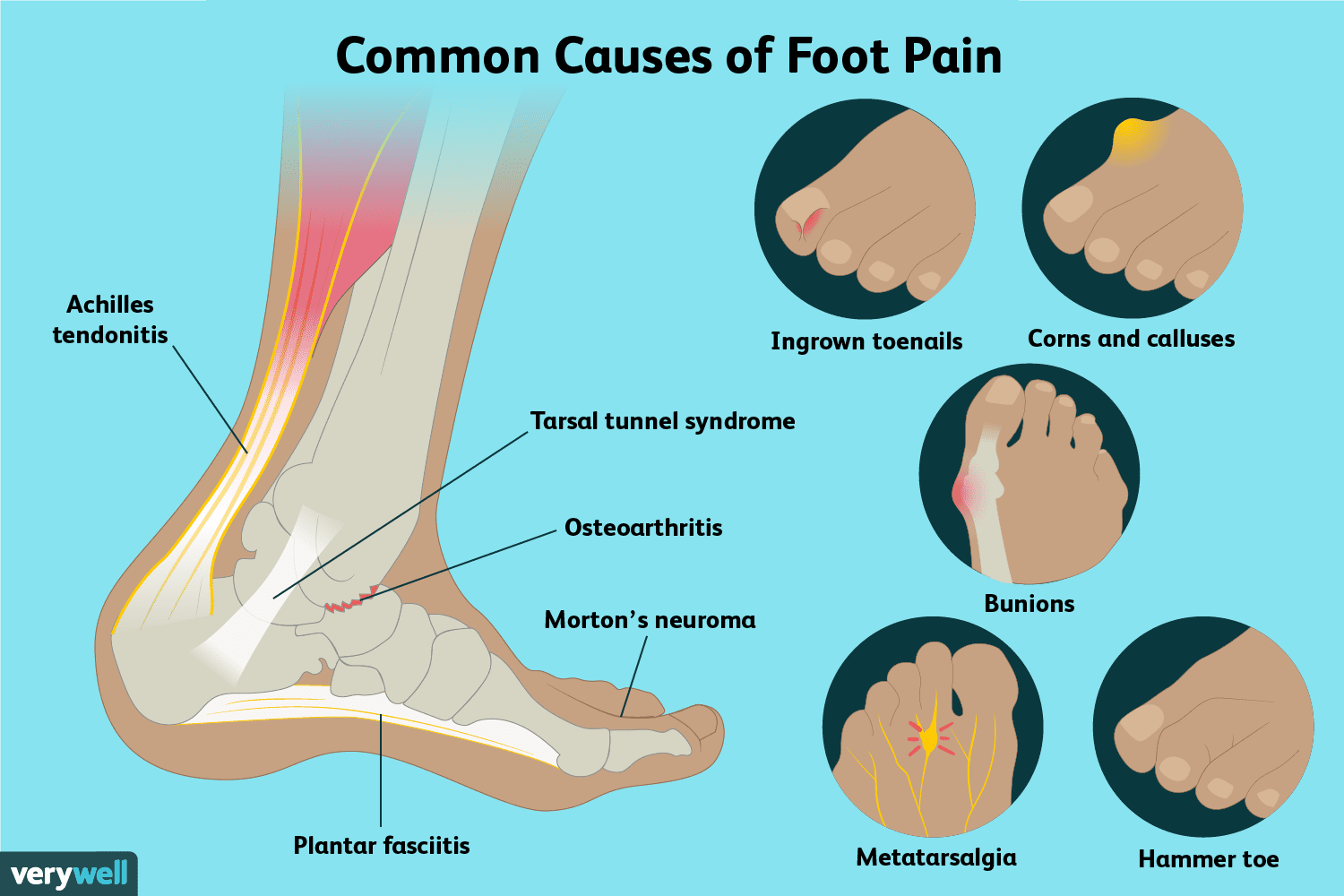The location of foot discomfort might reveal the underlying cause, which will dictate whether or not medical treatment is required. Foot discomfort occurs due to factors such as uncomfortable shoes, prolonged standing, athletic injuries, and chronic illnesses such as arthritis. Nearly one-fourth of adults suffer from chronic foot discomfort.
It is not easy to identify foot discomfort based on location alone. Numerous disorders, such as arthritis, can affect multiple foot sections. Injuries such as a fractured bone, sprain, or strain may also result in general or migratory pain. This article examines the potential causes of foot discomfort based on the location of the pain. It also describes when to visit a physician.
Here are some of the most prevalent reasons and treatments for foot pain.
1. Heel Spurs
A heel spur is a bony protrusion that attaches to tissue that spans the length of the foot, typically under the heel. The tissue can become irritated and tug on the bone if it is overstretched due to misuse, poorly fitted shoes, or extra weight. The body responds to stress by creating more bone.
Treatment consists of:
- Rest and icing intermittently
- Stretching workouts
- Supportive, properly-fitting footwear
- Injectable steroids
- Surgery in certain instances
2. Bunions 3
A bunion is a firm lump on the big toe’s base joint. Bunions develop when the toe is dragged toward the rest of the foot. Tight shoes or the structure of the foot provoke this condition. Inflamed bunions can be painful and sensitive to the touch. Wear shoes that do not push on the big toe and extend your toes regularly. Icing may provide pain relief. There are several forms of bunion surgery, but rehabilitation can take months, and the bunion may return.
3. Morton’s Neuroma
When two bones of the feet rub against one another and strain on the nerves between them, the body may produce additional nerve tissue known as Morton’s neuroma. It typically occurs between the bones that go to the third and fourth toes and is more prevalent in persons who stand or walk for extended durations. It can result in inflammation, tingling, numbness, soreness, and discomfort. The treatment for plantar fasciitis is rest and footwear that allows the feet to move freely. In extreme situations, injections of cortisone or surgery might be beneficial.
4. Corns
Corns are painful yellow spherical lumps that form on the top of your toes. The difference between a corn and a callus is that the core of the corn is hard. Corns are caused by pressure from another toe or improperly fitted footwear. You can use corn pads to ease the pressure, but you should never attempt to remove corn alone. A podiatrist may remove the corn with a simple treatment and suggest footwear that reduces the likelihood of developing another corn.
5. Diabetic Foot Ache
High blood sugar can damage nerves, and diabetics are more likely to suffer from neuropathy or foot nerve pain. It produces weakness, tingling, or a burning or stinging feeling. Additionally, diabetics may develop foot ulcers, frequently on the bottom of the foot. Due to nerve-damage-induced numbness, you may be unaware of foot wounds or other issues. Regularly inspect your feet or have them examined by a podiatrist if you have diabetes. Inquire with your doctor about drugs that may alleviate neuropathy discomfort.
If you are experiencing foot pain, you must consult a doctor for an assessment. Foot discomfort may be quite incapacitating, impacting a person’s mood, risk of falling, and quality of life. You deserve to feel well and return to your regular activities, and with the proper treatment plan, you can.






